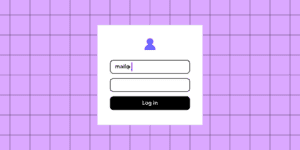Introduction: Understanding the Importance of Market Research Surveys
In today’s competitive world, understanding your market is the key to success. Whether you’re launching a new product, exploring new markets, or simply looking to stay ahead of the competition, a well-executed market research survey is necessary. It provides you with valuable insights that can drive business strategy, shape marketing efforts, and enhance product development.
Table of Contents
1. What Is a Market Research Survey and Why Does It Matter?
Market research surveys are structured questionnaires designed to gather information about customers, competitors, or the market as a whole. These surveys are a crucial tool for any business looking to make data-driven decisions.
a. Understand Your Target Audience
A market research survey is necessary to understand the needs, preferences, and behaviours of your target customers. By gaining deeper insights, you can tailor your products or services to meet their expectations, enhancing customer satisfaction and loyalty.
b. Identify Market Trends and Opportunities
Market dynamics are constantly changing, and staying ahead of trends can give your business a competitive edge. Surveys help you identify emerging opportunities and stay relevant in your industry.
c. Reduce Business Risks
Launching a new product or entering a new market always carries some risk. A well-crafted market research survey can help mitigate these risks by providing data that informs strategic decisions, ensuring you’re investing in the right areas.
2. Key Benefits of Conducting Market Research Surveys
Why should businesses invest time and resources in market research surveys? Here are some compelling reasons:
a. Make Informed Decisions
Rather than relying on intuition, you can use hard data to guide your decisions. For instance, if you’re thinking about launching a new product, a survey can tell you whether there’s a demand for it and how it should be positioned.
b. Enhance Customer Experience
Knowing what your customers want is the first step to improving their experience. Market research surveys can reveal pain points and areas for improvement, helping you provide better service and keep your customers happy.
c. Optimise Marketing Strategies
A market research survey is necessary for developing effective marketing campaigns. By understanding what resonates with your audience, you can create messaging that engages them and drives results.
d. Strengthen Your Brand
Understanding how your brand is perceived in the market is crucial for building a strong brand identity. Surveys can reveal how well your brand aligns with customer expectations and whether any adjustments are needed.
3. Types of Market Research Surveys
Different types of surveys serve different purposes. Here’s a look at some of the most common types:
a. Customer Satisfaction Surveys
These surveys measure how satisfied customers are with your product or service. They help identify areas where you’re excelling and areas where improvement is needed.
b. Product Feedback Surveys
Before launching a product, gathering feedback is vital. Product feedback surveys assess whether your product meets customer expectations and if there are any features or improvements they’d like to see.
c. Brand Awareness Surveys
Brand awareness surveys measure how well your brand is known in the market. They help you understand the effectiveness of your branding efforts and where you can improve.
d. Competitor Analysis Surveys
Understanding your competitors is just as important as understanding your customers. Competitor analysis surveys provide insights into what your competitors are doing right and where you can gain an advantage.
4. Best Practices for Creating an Effective Market Research Survey
Creating a survey that yields valuable insights requires a strategic approach. Here are some best practices to consider:
a. Define Your Objectives Clearly
Before you start, it’s crucial to understand what you’re trying to achieve. Are you looking to gather feedback on a product, understand your brand’s perception, or explore new market opportunities? Having clear objectives will guide the design of your survey.
b. Keep It Short and Focused
People have limited attention spans, so keeping your survey concise is essential. Focus only on questions that will provide actionable insights, and avoid asking for unnecessary information.
c. Use Simple and Clear Language
Your questions should be easy to understand, without any jargon or complex wording. Simple language ensures respondents can provide accurate and thoughtful answers.
d. Offer Multiple Question Types
Using a mix of multiple-choice, rating scales, and open-ended questions keeps your survey engaging and allows for both quantitative and qualitative feedback.
5. How to Use Survey Tools for Market Research
The good news is that creating a survey doesn’t have to be complicated. With user-friendly platforms like SurveyPlanet, you can design and distribute surveys effortlessly.
a. Customisable Templates
SurveyPlanet offers a wide range of templates that cater to different research needs. Whether you’re running a customer satisfaction survey or a brand awareness study, you can customise the templates to suit your objectives.
b. User-Friendly Interface
Even if you’re not tech-savvy, SurveyPlanet’s intuitive interface makes survey creation a breeze. The drag-and-drop functionality allows you to add questions, set up logic, and preview your survey in minutes.
c. Powerful Data Analysis
Once your survey is complete, SurveyPlanet provides detailed reports that make it easy to analyse responses and identify trends. You can use this data to make informed decisions and improve your business strategy.
6. Common Mistakes to Avoid in Market Research Surveys
Even the best intentions can lead to ineffective surveys if you’re not careful. Here are some pitfalls to watch out for:
a. Asking Leading Questions
Leading questions can bias your results and skew the data. Make sure your questions are neutral and don’t push respondents toward a particular answer.
b. Overloading Your Survey with Questions
While you may want to gather as much information as possible, a lengthy survey can deter people from completing it. Prioritise the most important questions to ensure a higher response rate.
c. Ignoring the Power of Follow-Up Questions
Sometimes, an answer deserves more exploration. Use follow-up questions to gain deeper insights, but only if they’re necessary and won’t overwhelm the respondent.
7. How to Analyse Survey Data Effectively
Collecting data is just the beginning. To make the most of your market research survey, you need to analyse the results thoughtfully.
a. Segment Your Audience
Breaking down responses by demographics or other criteria can reveal interesting patterns. For example, you may find that younger customers prefer different features compared to older ones.
b. Look for Trends and Patterns
Are there consistent themes emerging from the feedback? If many respondents highlight the same issue, it’s likely an area that needs attention.
c. Use Data to Drive Action
The ultimate goal of a market research survey is necessary to take action based on the insights you gather. Use the data to inform product development, adjust marketing strategies, or improve customer service.
8. Real-World Examples of Market Research Success
To see the true value of market research surveys, let’s look at some real-world examples:
a. Company A’s Product Launch Success
Before launching a new product, Company A conducted an extensive market research survey to gauge customer interest and identify preferred features. The feedback allowed them to refine the product, leading to a highly successful launch.
b. Company B’s Brand Revamp
Company B used brand awareness surveys to understand how their brand was perceived. The results highlighted a disconnect between the brand’s image and customer expectations. By addressing these gaps, they were able to strengthen their brand and attract a new audience.
c. Company C’s Customer Experience Improvement
Customer satisfaction surveys revealed pain points in Company C’s service delivery. By addressing these issues, the company saw a significant increase in customer loyalty and positive reviews.
9. The Future of Market Research: Embracing Technology
As technology evolves, market research is becoming more sophisticated. AI and automation are transforming how surveys are conducted and analysed.
a. Predictive Analytics
Using predictive analytics, businesses can anticipate customer needs and make proactive decisions. This technology analyses survey data to forecast future trends and behaviours.
b. Real-Time Feedback
With real-time feedback tools, businesses can respond to customer concerns immediately. This approach enhances the customer experience and builds brand loyalty.
c. Personalised Surveys
AI allows for more personalised survey experiences, tailoring questions based on the respondent’s previous answers. This approach can increase engagement and provide more relevant insights.
Conclusion: Invest in Market Research to Drive Business Success
In today’s ever-changing business landscape, understanding your market is more important than ever. A market research survey is necessary to stay ahead, reduce risks, and deliver what your customers truly want. By using tools like SurveyPlanet, you can streamline the process and make data-driven decisions that drive growth.
Remember, the key to successful market research is asking the right questions, analysing the data thoughtfully, and taking action. Start planning your market research survey today and watch your business thrive!












